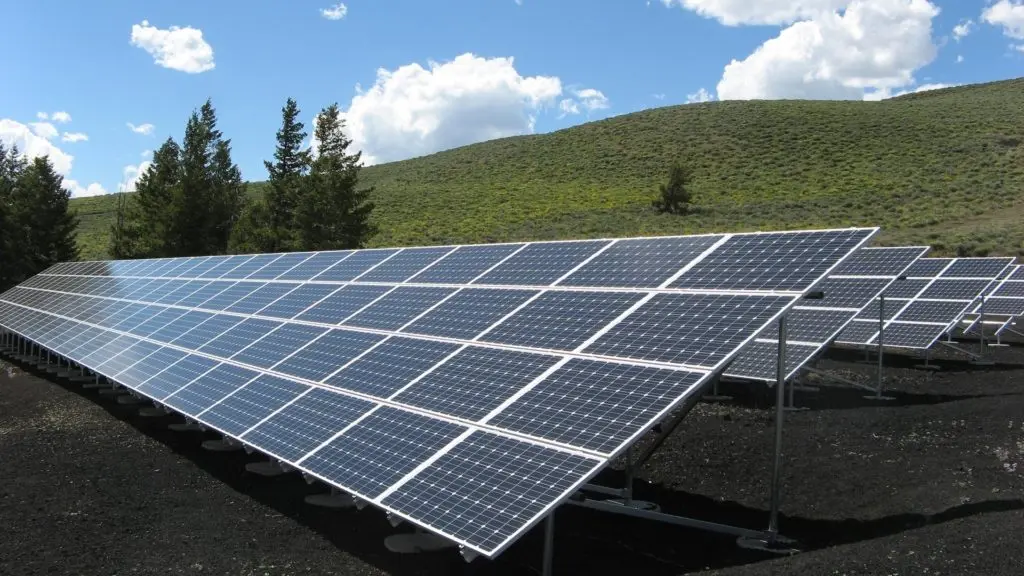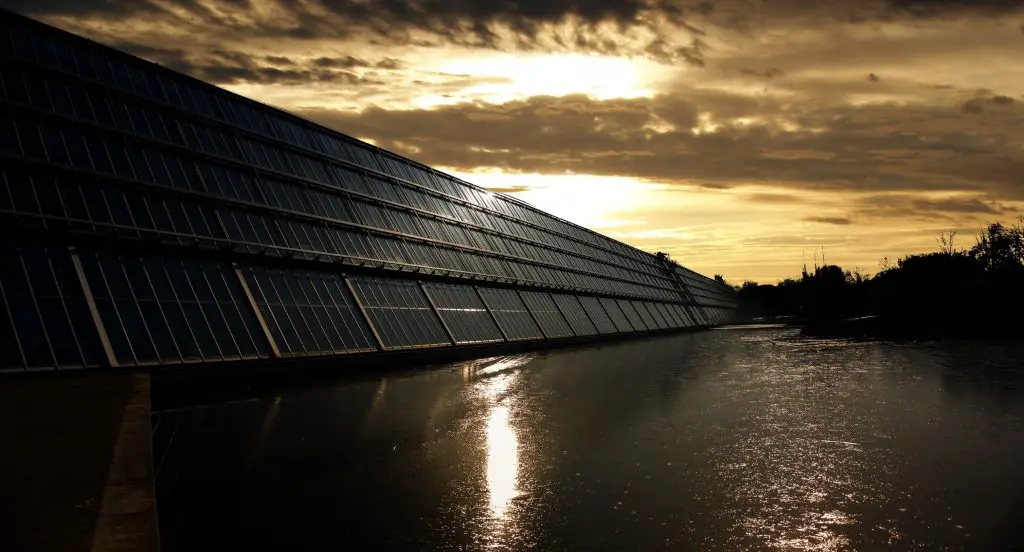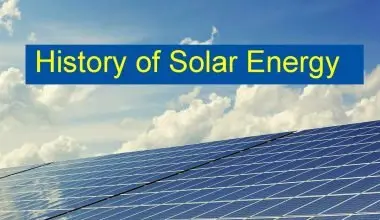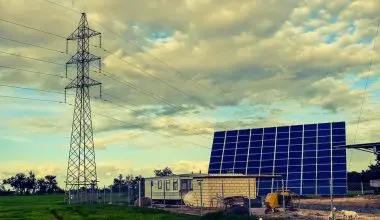Table of Contents Show
As indicated by research, the earth receives a huge amount of solar energy from the sun, 173 trillion Terawatts to be explicit. That is actually ten thousand times more power than the whole population uses. This approves the way that the sun is the greatest source of energy easily accessible around the world and that it might one be able to day be the most dependable out of all forms of energy.
Historically, the world’s electrical needs have been satisfied by non-renewable energy sources like oil, flammable gas, and coal. In any case, these vitality sources have two principle negative effects:
These non-renewable sources of energy result in undesirable outcomes such as global warming and acid rain, which adversely impacts numerous creatures, plants, and people in the earth. Not many nations have full access to petroleum derivative based energy assets, which can prompt worldwide political and financial friction.
The best option is solar energy, which is a sustainable asset, which means it won’t become inaccessible. It gives an infinite, reliable and dependable supply through time. Solar energy is likewise a renewable source of energy since it doesn’t produce pollutants throughout the energy generation process.

What is Solar Energy?
Solar energy is made by the sun in a mixture of heat energy and light energy. It is a standout amongst the most sustainable and easily accessible source of energy in our World. The way that it is accessible in huge amounts, is free and is not an individual’s property makes it a standout amongst the most significant of the modern sources of energy. Solar energy has been utilized by individuals historically by using magnifying glasses to focus the light of the sun into thin beams which are hot enough to light fire when focused on wood.
Mostly, solar energy can very well be transformed into heat energy or otherwise into electricity. Solar Energy is energy extracted from the sun. It’s made productive in two major ways;
- Via Electricity production:
This system uses Solar Photovoltaic (PV) devices or sun based cells that make electricity from the sun’s energy. Photovoltaic gadgets produce power directly from the daylight through an electronic procedure that normally happens in materials known as semiconductors.
Electrons contained in these materials are let free by sun based beams are energized to travel through an electronic circuit, sending energy to the grid or directly power electrical gadgets such as mobile phones. This type of energy can be utilized to control sun powered watches, solar-powered homes or traffic signals. Solar energy is regularly utilized in areas that are not connected with conventional electricity (usually mountainous areas where there are no electricity grids).
- By Using Solar Energy Collecting Devices
A sunlight based heat energy collector tackles heat by absorbing the sun beams. This strategy utilizes the sun’s energy to warm up water (sunlight-based high temperature water panels) for household purposes, for example, water radiators, hot tubs, and pools. The more optimized solar power plants use the more complex heat collectors to deliver power by warming a fluid to turn a turbine associated with a generator. Simple forms of collectors are typically used in business and private structures for space warming.
The sunlight based vitality transformed into electricity can be utilized to turn on lights or numerous different gadgets. Even better, it very well may be put away in batteries for utilizing sometime later. Sun powered cells ordinarily create direct flow (DC) – type power. Be that as it may, it tends to be changed over into AC (rotating current) through a device known as an inverter. Solar energy changed over into heat energy with the end goal of water warming can be used right away or put away as boiling water in storage tanks to be utilized later.
Solar energy can be classified as active or passive solar energy relying upon how it is caught and used. In active form of solar energy, specific solar warming gear is utilized to transform solar energy to heat energy while in passive solar energy, the mechanical hardware is absent. Active sun-powered incorporate the utilization of mechanical hardware like photovoltaic cells, solar-based heat energy collectors or siphons and fans to trap the solar energy.
Latent or passive solar advancements convert sunlight based vitality to warm vitality without utilization of dynamic mechanical frameworks. It is primarily the act of utilizing windows, dividers, trees, building situation and other basic procedures to catch or divert the sun for use. Latent sun based warming is an incredible method to save energy and boosting its usage. A specific example of using passive solar energy would be how your car heats up from the sun when it’s parked in the driveway. Others have been known to use passive solar energy to dry clothes.
So how is Solar Energy Converted to Electrical Energy? (Making Electricity)
The first step to make electricity from Solar Energy is to introduce Photovoltaic (PV) cells or solar cells. Photovoltaic basically means the combination of light and power. These cells capture the solar energy and convert it into power. These sunlight based cells are made of materials that show photovoltaic capabilities, which means when the sun beams strike the Photovoltaic cell, the photons of light stimulate the electrons in the solar cell activating them to get moving, eventually delivering electricity.
When buying solar panels, it is better to know the products available in the markets.
Here is a blueprint of the fundamental ones:
Polycrystalline panels, which use Multi-crystalline Silicon in panels.
Monocrystalline panels which are best for small uses.
Thin Film is typically greater in size and highly efficient throughout the day.
The difference between the material used to produce mono-crystalline and polycrystalline lies in the composition of the silicon substrate used to make solar cells and at last, Solar Panels. As the name recommends, polycrystalline means having various crystals, while mono-crystalline means a single crystal. The bigger the crystal sizes, the more effective the sun oriented cells, which clarifies the reason mono-crystalline cells are ordinarily 10 – 15% more efficient than the polycrystalline crystals.
How do Solar Panels work?
The solar panels need to be placed on an open zone that isn’t shadowed by trees or any establishment. A rooftop is usually the best place. It’s wired into the structure through the inverter. The inverter is a gadget that transforms DC (direct current) to AC (exchanging current). Along these lines, the direct current is the form of electricity produced through the solar panels. This solar energy is changed over into AC. The explanation behind changing over the immediate flow into alternating current is to power household machines only in the manner in which you control your appliances with typical electricity that comes from the grid (which is AC- Alternating current).
What to know before installing solar panels? (Things to Consider)
Prior to making any move to introduce solar panels on your rooftop, make sure that solar energy is beneficial to you and your household. At that point, make sure that adequate daylight is accessible in your area. The feasibility of sun oriented vitality differs impressively with how much sunlight a zone gets. In the event that your region does not get adequate daylight, putting money into solar panels won’t be helpful.
After confirming that your territory gets sufficient sunlight, ensure installation space is accessible. We’ve discovered that solar panels are essentially placed on tops of structures. While this is recommended, it’s not the only place you can install solar panels. If you have an open space that can be used in your backyard, it would be a perfect spot for placing panels on the ground. The backyard alternative is perfect for those whose rooftops are shaded or not structurally capable for mounting solar panels. Additionally, it is fundamental to learn the local laws in regards to solar installations to abstain from getting into an issue with the local authorities. You can get this data from your nearby expert in solar energy, or you can just go up to a vendor and ask as well. If you require help doing this you can find us and we’ll look into the local laws in your territory and help you install a couple of solar panels?
Impact of Solar Energy on the Environment
Nobody’s perfect. Even when said that solar energy is viewed as one of the cleanest, infinite and renewable energy source among the accessible sources however is has some environmental effects as well. Solar panels utilize photovoltaic cells to create solar power. Nonetheless, making the photovoltaic cells to produces that energy requires silicon and produces some waste items. Wrong treatment of these materials may prompt unsafe introduction into the environment affecting humans and what not. Introducing solar power plants may require huge spaces of land, which may affect existing biological systems. Solar energy does not cause air pollution when transformed to power by solar panels. It is found in infinite amounts and does not add to global warming.
So what is the future of Solar Energy?
Before bringing up the future of solar energy, a couple of facts need to be established at first.
Climate change is quite real and can result in devastating effects on the quality of human life as well as other forms of life on this planet.
if we think about decreasing our youngsters’ danger of enduring the worst part of the disastrous impacts of climate change, we should increase our efforts in limiting the rate of green-house gas emissions by 80% before we touch 2050. Since 60% of worldwide emissions come from energy use, we have the obligation to start low carbon outflow innovations at an immense scale starting today.
Solar Energy is the most abundant and renewable source of energy found so far.
Regardless of being renewable, different sources of energy other than geothermal, atomic and tidal, originate from sunlight. Petroleum products are basically solar power consolidated over decades utilizing remains of plants and animals as batteries. Wave and wind power exist only due to solar power. When thinking of low-carbon emission sources of energy, it’s simply wind, solar and perhaps nuclear power that can accomplish the level required to fulfill the always developing demand of energy.
There has been a significant rise in innovations of Solar Panels
Solar Panels are scaling up speedier than any energy innovation. The limit of all introduced photovoltaic gadgets has multiplied at regular intervals since 2000, going up to 200 gigawatts (GWp) in the year 2014. This exponential development points that it will not slow down. On the off chance that the quick development of photovoltaic innovation proceeds at such exceptional rates, solar energy would fulfill the power needs of the whole world.
All things considered, the fate of solar energy is only brilliant considering vast economies like U.S.A, and China are submitting billions of dollars to the advancement and establishment of innovations in solar energy. Likewise, the way that solar energy is a renewable energy attractive to most governments that are downsizing their reliance on fossils fuels.
There are some of the best solar panels you can buy if you live in the states, let me collect some knowledge and find out what’s best for you and I’ll update you soon!





